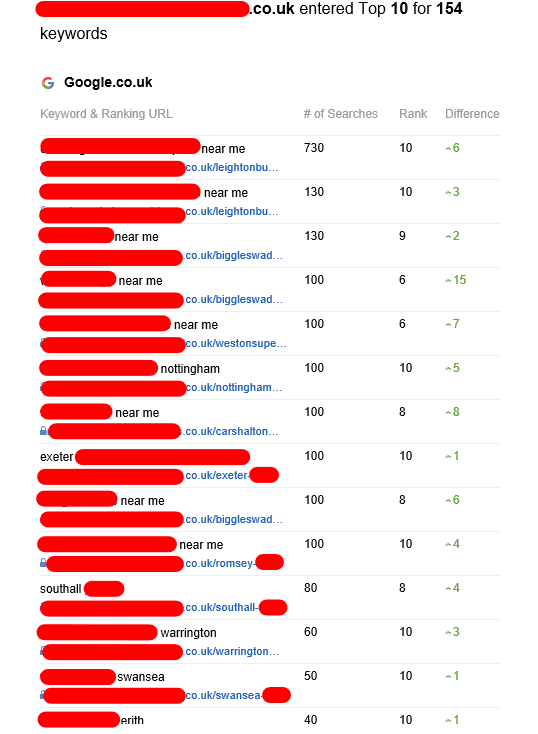Backlink Tier - The Hierarchy of Backlinks That Scale Your SEO Campaign

The Backlink Tier is the hierarchy of backlinks that you construct to boost your SEO campaign. Each level adds an additional layer of protection against Google and its penalties.
Tiered link building requires considerable time and effort to get it right. This is because Google takes weeks to find new backlinks and evaluate their quality on the basis of each link.
First-Tier Links
The first link that will lead to your piece of content must be high-quality dofollow backlinks from trusted websites. These are referred to as Tier 1 backlinks and act as the foundation of your link building strategy. They endorse your web page, and give it the authority to be highly ranked on search results pages of engines. If, for instance your blog article was published on HubSpot and included a tier-one link to SearchEngineLand's compilation Link Building Statistics then SearchEngineLand’s website rankings will benefit from the link equity HubSpot passed on.
The second tier is more diverse and may include low-quality backlinks, like spammy forum posts or low-value bookmarking sites and directories. The primary goal of Tier 2 is to create content of high-quality that links back to your first-tier backlinks. This is because quality content will enrich the article the context of which it is located, and will not be able to distinguish itself as something that has been added for SEO purposes.
In order to build a successful tiered link building campaign, you'll have to invest in creating high-quality content and invest in tools like RankerX or GSA. The time and expense of manually executing a tiered campaign is well worth it if you wish to reap the higher rankings of a well built backlink pyramid.
Second-Tier Links
Tiered link building is designed to enable users to navigate through external pages before navigating to your site. In order to achieve this it's essential to select second-tier backlink sources that are relevant to your industry and site. In contrast to account profiles guest blog posts work well in this regard since they provide content that users would like to consume.
In general, you should avoid using tier 2 links in forums or on other low-quality websites. Instead, use high-quality pages like industry news or guest articles. These links will look more natural and will have greater impact on your rank in the search results. They're also more likely to be regarded as having passed link equity by Google, which can increase the value of their position in SERPs.
If you're building tier two links with the intention of increasing your SEO rankings It is important to be aware that it's difficult to acquire these types of high-quality backlinks on your own. It can take months to pitch guest posts to top-tier publishers and even more time for them to be published. Additionally, it may take weeks to see outcomes of your efforts in creating new traffic and online conversions.
Many SEOs utilize automated tools to build second-tier backlinks. This method may violate Google's Webmaster Guidelines and result in an enactment of penalization.
Third-tier Links
This level is home to a huge number of links, some that are borderline spammy. They are posted in social media platforms as well as on user-generated content sites such as Quora. They aid in the indexing of tier two links, but don't pass any link equity to the resource being promoted. They are generally nofollow links. At the moment marketers are more concerned with quantity rather than quality. They use tools to post an enormous number of links on forums, in comment sections of articles and blog posts, in directories, and other similar places. In this scenario tiered link-building can be considered a gray zone that is in violation of Google's webmaster guidelines.
Link-building strategies that are classified require a lot of energy and time to be successful. It could take weeks or even months for Google to rank one backlink, and after that it could take weeks or even months to notice a significant SEO impact. Marketers should be patient and utilize a carefully-planned content strategy.
Additionally, marketers should avoid using excessive automation tools for this level of linking. These tools can break the rules of search engine optimization and lead to penalties. It is preferential to manually choose and post links on relevant donor websites instead of using automated services such as GSA or RankerX. This will stop search engines from penalizing your marketing for low-quality links.
Fourth-Tier Links
Tiered link building is still a popular method for improving website rankings. However since Google has made significant efforts to eradicate "black white hat" SEO practices, tiered linking methods have been slashed.
This is because they are considered to be gray-hat in the SEO world, and could be penalized if used improperly. Tiered backlinks are backlinks constructed on various levels of a pyramid. The primary purpose of these backlinks is the increase in the position of a resource promoted in search results. This way, the promoted web page can be more prominent than its competitors and draw more organic traffic.
The quality of backlinks in this tier takes the plunge, and they are usually nofollow. Additionally, this tier can be comprised of low-quality media profiles, directories, and article networks. These links may be constructed naturally or by using strategies for automation. However, they must remain diverse in terms of niches, domains and their relevance.
In addition to their low-quality, nofollow character, these backlinks can also cause problems if not diversified enough. Google has a group of hound dogs that are highly trained and constantly look for patterns and techniques in backlink profiles. If they do find them, not only could the link-building team be penalized, but also its customers.
